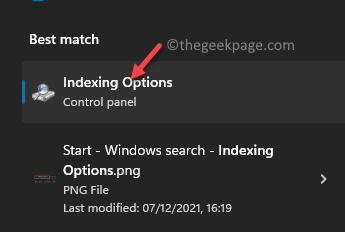

If you know the rough file size, you can use the ‘size:’ command to filter out results.

If you know the dimensions of the image, you can type in width: x, height: x. Below we have a number of tips exclusive for images on your PC. But it’s a very fast way to find files and folders by name on your entire system, without dealing with Cortana or telling Windows to index your entire system drive, which could potentially slow things down.First let’s take a look at the options you have available for tracking down specific images. Its one downside, compared to Windows’ built-in search, is that it can only search file and folder names-it can’t search the text within those files.
#Search for specific file type windows 10 portable
Like many other great Windows tools, it’s also available as a portable application. It’s a lightweight, small application that uses uses minimal system resources. It should be able to index most PCs in just a few minutes. It builds a search index as you use it, so you can just start searching and it will work immediately. There are quite a few decent ones out there, but we like Everything-and yes, it’s free.Įverything is very fast and simple. If you’re not thrilled with the integrated Windows search tools, you may want to avoid them and go with a third-party utility. This is the same index used for the Start menu search feature. To make Windows index more folders, click Advanced Options > Change Indexed Locations and add the folder you want. Windows will do a deeper search and find words inside files, but it may take a lot longer. To change this, you can click the “Advanced options” button and enable “File contents”. Note that, when searching in non-indexed locations, Windows will only search file names and not their contents. You can narrow things down by clicking the “Search” tab on the ribbon and using the various options to choose the file type, size, and properties you’re searching for. If the location you’re searching isn’t indexed-for example, if you’re searching your entire C: drive-you’ll see a progress bar as Windows looks through all the files in the location and checks to see which match your search. (You can make this a bit faster by telling Windows to always start searching when you type in File Explorer.) if you’re searching an indexed location, you’ll get results instantly. Then, type a search into the box at the top right corner of the window and press Enter. If you want to search your entire C: drive, head to C. For example, if you just want to search your Downloads folder, open the Downloads folder. In File Explorer, navigate to the folder you want to search. If you frequently find yourself frustrated with the Start menu search feature, forget about it and head to File Explorer when you want to search.

By default, it will index data in your user account’s folders and not much else. Windows automatically scans and monitors these folders, building the search index it uses when you search via the Start menu. You’ll be able to choose your indexed search locations. To improve the results, click the “Filters” option in the menu and then click the “Select locations” button at the bottom of the menu.
#Search for specific file type windows 10 how to
RELATED: How to Choose Which Files Windows Search Indexes on Your PC These categories are all narrow and include online locations, like your OneDrive. The problem is that there’s no way to search just all your local files. You can narrow this down by clicking the “Filters” button and selecting “Documents”, “Folders”, “Photos”, or “Videos”. By default, the Start menu searches everything it can-indexed files, Bing, OneDrive, the Windows Store, and other online locations.


 0 kommentar(er)
0 kommentar(er)
